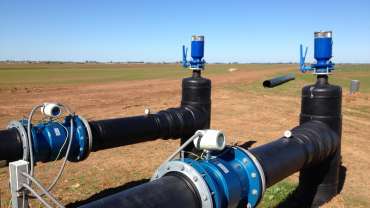Air Release valves which is also called air relief valves are used in pressured pipelines.
In this blog, we will inform you about the industries air release valves used and their advantages and disadvantages.
Trapped air in the pipeline can cause flow issues, water hammer or pressure surges and harm the pump function. Unnecessary air in the pipeline also causes the pump work harder which increases energy consumption.
Three main reasons for the trapped air are;
- The pipeline itself; Before start-up, the pipe is empty and filled with air. The air must be released before pipeline is filled with liquid.
- Fluid pumped; water contains %2 air by volume. As water moves through the pipeline, the air got separated from liquid and accumulate at high point on the pipeline.
- Mechanical Equipment; Air can be injected into system by pumps, valves and pipe joints.
As fluid is forced to move through cramped pipeline, its velocity increases. As the velocity increases, air pocket will break away and causes high pressure surge and water hammer.
The purpose of air release valves is to continually release excess air out of the system, resulting in smooth and efficient operation.
Air release valves are installed at the highest points in the pipeline where air naturally accumulated. Air bubbles enter the valve and changes places with liquid. This lowers the liquid level and causes float to drop. Float drop pulls the seat away from the orifice, triggering the valve to open and vent the air. After air released, the liquid again enters the valve and float the disc. Float disc pushes the seat to the orifice and closes the valve. This cycle automatically repeats until unnecessary air is vented.
Air release valves protect the pipeline systems and ensures its efficiency. Air release valves are perfect for quickly venting large volumes of air during start-up. Air release valve also allow air back into system during emptying.


